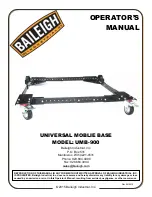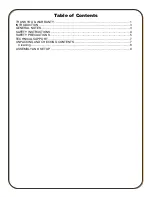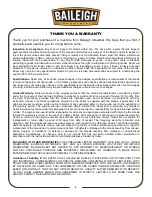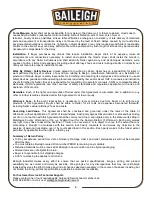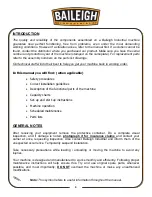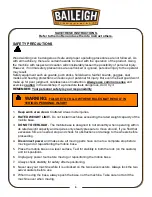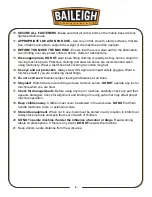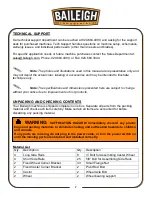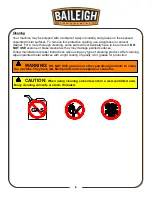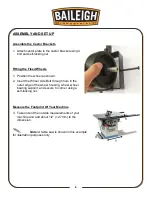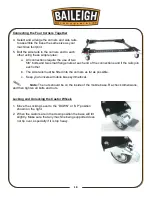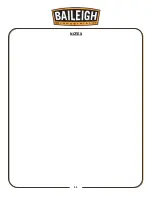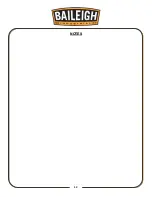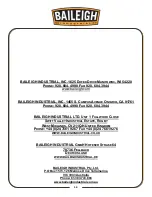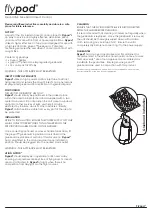
5
5
SAVE THESE INSTRUCTIONS.
Refer to them often and use them to instruct others.
SAFETY PRECAUTIONS
Wood working can be dangerous if safe and proper operating procedures are not followed. As
with all machinery, there are certain hazards involved with the operation of the product. Using
the machine with respect and caution will considerably lessen the possibility of personal injury.
However, if normal safety precautions are overlooked or ignored, personal injury to the operator
may result.
Safety equipment such as guards, push sticks, hold-downs, feather boards, goggles, dust
masks and hearing protection can reduce your potential for injury. But even the best guard won’t
make up for poor judgment, carelessness or inattention.
Always use common sense
and
exercise
caution
in the workshop. If a p
rocedure feels dangerous, don’t try it.
REMEMBER:
Your personal safety is your responsibility
.
1.
Keep work area clean.
Cluttered areas invite injuries.
2.
RATED WEIGHT LIMIT
- Do not install machines exceeding the rated weight capacity of the
mobile base.
3.
DO NOT OVERLOAD
- The mobile base is designed to roll smoothly when operating within
its rated weight capacity and requires only steady pressure to move around, If you find that
excessive force is needed, stop and check for obstructions or damage to the wheels before
proceeding.
4.
Disconnect power
and make sure all moving parts have come to a complete stop before
moving and or repositioning the mobile base.
5. Place the mobile base on a level surface. Test for stability in both the lock (on the castors)
and lock positions.
6. Unplug any power tool before moving or repositioning the mobile base.
7. Always check stability for safety after repositioning.
8. Never use your machine while it is unlocked on the two swivel castors. Always lock the two
swivel casters before use.
9. When moving the base, always push the base, not the machine. Take care not to tilt the
machine over when moving.
WARNING:
FAILURE TO FOLLOW THESE RULES MAY RESULT IN
SERIOUS PERSONAL INJURY

